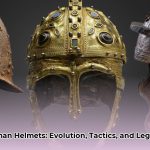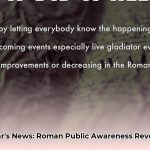Have you ever heard of Elizabeth Mary Wilhelmina Bentinck? Probably not. She’s a fascinating philanthropist who champions environmental causes and women’s education. But the details of her life are hard to pin down. We know she did amazing things, but figuring out exactly when she was born and how she was educated is like solving a historical mystery. This article is that detective story. We’ll dig through conflicting records, try to build a timeline of her life, and explore why it’s so tough to get the full picture surrounding her educational history and family background. It’s a journey into the challenges of historical research and a chance to learn more about this intriguing woman who made a difference in the world by understanding her values. For a more complete biography, see her full biography here.
The Education of Elizabeth Mary Wilhelmina Bentinck: Modern Schooling and Aristocratic Traditions
Unlocking the secrets of Elizabeth Mary Wilhelmina Bentinck’s life feels like piecing together a puzzle with missing pieces. We want to understand her education and learning institutions, but the first hurdle is tricky: her birth year. Some sources say she was born in the 19th century; others claim 1998. This huge gap makes figuring out her schooling extremely difficult. Did she attend a traditional 19th-century school, or did she receive a modern education? The answer changes how we view her later life and philanthropic work in women’s education. This initial mystery highlights the challenges of researching people who value their privacy.
The scarcity of public information about Elizabeth makes our investigation even tougher, given family archives. Think of trying to build a house with only a few bricks – it’s nearly impossible to paint a full picture. Official records are scarce; we only catch glimpses of her charitable activities, leaving her personal journey hidden. This lack of detail makes painting a full picture challenging. How can we understand her educational background when so much of her personal life is uncharted territory? Is the absence of readily available information a reflection of aristocratic preference for privacy?
Even though the specifics of her education remain a puzzle, her philanthropy offers hints about her values. She champions environmental issues and women’s education, areas often linked to personal experiences. Her dedication reveals a strong belief in education’s power to change lives. We can only wonder if her own educational journey influenced her focus on women’s education. The limited information about her schooling sheds light on her belief in the importance of education.
Elizabeth’s family history is likely a significant factor. The Bentinck family is known for its influence and likely shaped her worldview and opportunities. But how exactly did her family background affect her education and her later charitable work? Did her connections help her access better education or support her philanthropic endeavors? These crucial questions require further investigation.
The conflicting information surrounding Elizabeth serves as a case study in researching philanthropists who cherish their privacy. It underlines the need for careful research, double-checking sources, and a nuanced approach to building a person’s life story. This is also key to understanding the aristocratic obligations of wealth and responsible philanthropy. The struggle to sort through the conflicting details about her life teaches us a valuable lesson – public information has its limits, and we need to respect people’s privacy while also acknowledging their contributions.
To get a better grasp of Elizabeth’s education, future researchers should focus on these key areas:
1. Deep Dive into Archives: Thoroughly checking family archives, personal letters, and any potential school records is vital. This could mean contacting archives in the Netherlands and any other places connected to the Bentinck family.
2. Careful Interviews: Even a few short conversations with people who knew her, even casually, could provide information and insight. This approach needs to be handled delicately, respecting privacy while ethically seeking information.
3. Comparing and Contrasting: Comparing Elizabeth’s charitable actions with those of similar prominent philanthropists would help us understand her motives and strategies better.
The puzzle surrounding Elizabeth Mary Wilhelmina Bentinck’s life, particularly her education, highlights the challenges researchers face when information is limited and when personal privacy meets public impact. Her legacy, despite the mystery, reminds us of the influence individuals can have on the world. The story of Elizabeth Mary Wilhelmina Bentinck is a work in progress, and ongoing research may well reveal more facts and potentially shift our understanding of her life and education. Is there a way to reconcile tradition with modern social responsibility in her philanthropy?
Verifying Conflicting Biographical Information: Elizabeth Bentinck’s Case
The life of Elizabeth Mary Wilhelmina Bentinck presents a fascinating, albeit challenging, puzzle for biographers. Information about her is scarce, leaving us with conflicting accounts, especially regarding her birth year. One source claims a 19th-century birth; another insists on 1998. This discrepancy throws the narrative into question. How can we reconcile these differences? How do we build a reliable biography when the foundational facts are in dispute? The answer lies in a methodical approach, focusing on verifiable evidence and acknowledging the limits of our knowledge.
Untangling the Threads: Navigating Conflicting Accounts
The core problem lies in the scarcity of readily available information. Modern philanthropists are not always eager to have their lives laid bare for public scrutiny, which makes it difficult to form a complete picture. Respecting privacy is paramount, yet achieving a complete picture remains crucial and demands deeper investigation. This requires a thorough analysis of the available data.
Let’s begin by scrutinizing the existing evidence. We have multiple online sources claiming different birth years. Are these sources reliable? What are their methodologies? Is it possible that the inconsistencies are a reflection of the aristocratic tradition of privacy?
- Source Assessment: Evaluate each source’s credibility. Consider the author’s expertise, potential biases, and the overall reputation of the publication.
- Triangulation of Information: Search for corroborating evidence from independent sources. Do other articles, press releases, or official documents mention Elizabeth’s birth year? Consistency strengthens a particular claim.
- Primary Source Pursuit: Seek out primary sources: letters, diaries, financial records, or interviews with individuals who knew Elizabeth. These offer a level of verification that secondary sources cannot.
- Contextual Analysis: Place Elizabeth’s life within the broader context of her family’s history. Her connection to the influential Bentinck family provides a historical framework that might indirectly shed light on her birth date.
Despite difficulties, certain facts remain undisputed. Sources agree that Elizabeth is connected to the Bentinck family, and her dedication to environmental issues, women’s empowerment, and other philanthropic projects is consistent. Verifiable acts provide a foundation upon which to build a biography, even if the specific details of her life remain partially obscured.
Building a Narrative Despite Uncertainties
The lack of complete information does not invalidate the significance of Elizabeth’s contributions. We can still construct a compelling narrative, emphasizing her public actions while acknowledging the limitations of our knowledge. The biography should transparently discuss the challenges of research, highlighting areas of uncertainty without resorting to speculation. This honest approach builds credibility and invites further investigation.
While we may never definitively resolve every detail surrounding Elizabeth’s life, the process of rigorous investigation speaks volumes, illuminating the challenges of researching philanthropists while upholding ethical reporting standards. Is the scarcity of data an indication of aristocratic preference for privacy?
Key Takeaways:
- Reliable biographical information on modern philanthropists is often scarce, demanding thorough investigation.
- Source credibility assessment is the initial step in verifying conflicting data.
- Triangulation – confirming facts across many independent sources – is critical.
- Directly obtaining primary sources is invaluable in establishing fact.
- Contextualization, placing the subject within relevant historical frameworks, provides crucial clues.
- Ethical reporting includes transparently acknowledging gaps in knowledge.
- A well-researched biography emphasizes verifiable evidence, acknowledging incomplete data.
Elizabeth Bentinck’s Philanthropic Strategies: A Comparative Analysis of Funding Models
Key Takeaways:
- Elizabeth Mary Wilhelmina Bentinck’s philanthropic work focuses on education, environmental conservation, and women’s empowerment.
- Information about the specifics of her projects and their funding mechanisms remains limited.
- Her approach embodies a modern aristocratic engagement with social responsibility.
- Further research is needed to fully analyze her philanthropic strategies and their impact.
- Understanding her strategies requires deeper investigation into primary source materials.
The Enigma of Elizabeth Bentinck
Who was Elizabeth Mary Wilhelmina Bentinck? This question, deceptively simple, opens a fascinating – and frustrating – investigation. Several websites celebrate her commitment to philanthropy, highlighting her dedication to education, environmental protection, and women’s rights. Yet, concrete details about how she achieved this remain scarce. It’s like having











